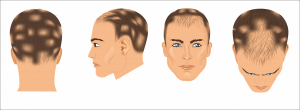Infections and Hair Loss
 There are a number of infections and illnesses that lead to hair loss in a patient. Infections that cause high fevers, bacterial infections and fungal skin infections can lead to thinning or balding hair. Some examples of these infections include:
There are a number of infections and illnesses that lead to hair loss in a patient. Infections that cause high fevers, bacterial infections and fungal skin infections can lead to thinning or balding hair. Some examples of these infections include:
- Ringworm – A fungal infection that causes patches of hair loss on the scalp.
- Folliculitis – Inflammation of the hair follicles that have different types. Only some special forms of Folliculitis can damage hair. Typical Folliculitis (that is commonly seen after a hair transplant) does not affect the growth of transplanted hair.
- Piedra – A condition caused when a fungus infects hair follicles.
In fact, at one time these bacterial and fungal infections were one of the main reasons for hair loss in children.
The key to quick and effective prevention of hair loss due to an infection is to identify the underlying infection. Early diagnosis of the condition, combined with new medications brought about by improved healthcare, has eliminated most of the diseases that target the scalp and their follicles. Swift and immediate treatment can help prevent further hair loss and lead to the regrowth of hair on the scalp.
Hair Transplant Indications
If you’ve lost your hair due to fungal or bacterial infections in the past and the active lesions are now dissolved, a hair transplant could help. You need to be evaluated by a hair transplant surgeon. In addition, you might need more laboratory testing or a skin biopsy before planning for a hair restoration procedure.


